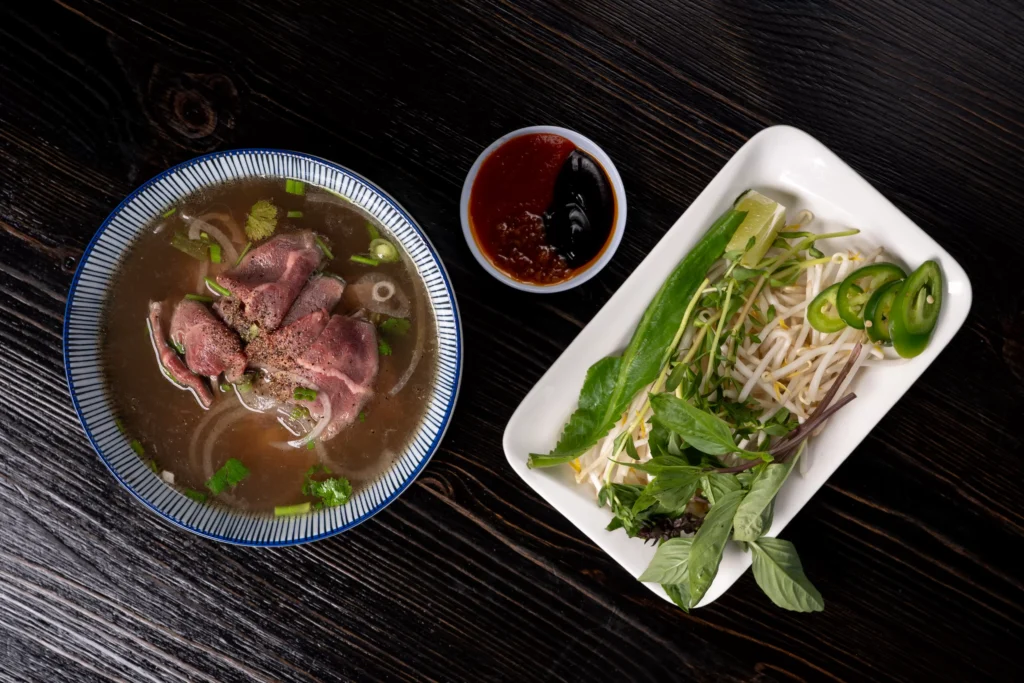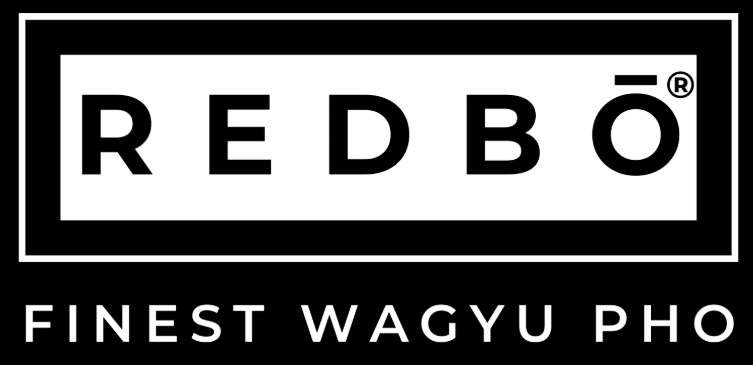
Pho Rare Steak is one of the most beloved variations of pho, the iconic Vietnamese noodle soup. Known for its delicate balance of flavors and tender slices of beef, this dish is a favorite among pho enthusiasts worldwide. At Pho REDBO, we take this classic to the next level with our premium Wagyu beef and authentic preparation methods. Let’s explore what makes Pho Rare Steak so special, its origins, and how you can enjoy it to the fullest.
What is Pho Rare Steak?
Pho Rare Steak, or Pho Tái in Vietnamese, is a version of pho that features thinly sliced raw beef added to a steaming bowl of savory broth. The hot broth gently cooks the beef to perfection right at the table, resulting in tender, flavorful slices that melt in your mouth. This dish is a celebration of fresh, high-quality ingredients and traditional Vietnamese culinary techniques.
Key Ingredients:
Rare Steak: Thinly sliced cuts of raw beef, often from premium cuts like Wagyu for extra tenderness and flavor.
Broth: A rich, aromatic beef bone broth simmered for hours with spices like star anise, cinnamon, and cloves.
Rice Noodles: Soft, silky noodles that provide a hearty base.
Fresh Herbs: Garnishes like Thai basil, cilantro, and scallions for a burst of freshness.
Condiments: Lime, hoisin sauce, and sriracha to customize the flavor to your liking.
The Origins of Pho Rare Steak
Pho itself originated in northern Vietnam in the early 20th century as a humble street food. Over time, it evolved into a national treasure, with regional variations offering unique takes on the dish. Pho Rare Steak became popular as an elevated option for beef lovers, highlighting the natural flavors of high-quality meat cooked in the purest way possible – by the broth’s heat.
Why Pho Rare Steak is Special
1. Exceptional Flavor Profile:
Pho Rare Steak offers a harmonious blend of rich broth, tender beef, and fragrant herbs. The thinly sliced steak absorbs the savory flavors of the broth while maintaining its natural beefy taste.
2. Unique Cooking Style:
The interactive cooking process adds an element of excitement to the dining experience. Watching the beef cook in the broth right before your eyes enhances the sensory enjoyment of the dish.
3. Premium Ingredients:
At Pho REDBO, we elevate Pho Rare Steak with Wagyu beef, known for its marbling and unparalleled tenderness. For those seeking Halal options, we also offer Halal-certified Wagyu beef, ensuring inclusivity without compromising on quality.
Pho Rare Steak at Pho REDBO
At Pho REDBO, we pride ourselves on offering an unforgettable Pho Rare Steak experience. Our commitment to authentic Vietnamese flavors and premium ingredients sets us apart:
Rich, Flavorful Broth: Our broth is simmered for over 12 hours to achieve a depth of flavor that’s second to none.
High-Quality Beef: We use only the finest cuts of Wagyu beef, ensuring a melt-in-your-mouth texture.
Customization Options: Add extras like lime, chili, bean sprouts, or hoisin sauce to suit your taste.
Halal Certification: For our Halal-conscious customers, we ensure that all ingredients meet strict Halal standards.
How to Enjoy Pho Rare Steak
If you’re new to Pho Rare Steak, here’s how to make the most of your dining experience:
Cook the Beef: Stir the raw steak into the hot broth as soon as it’s served. The heat will cook the beef to a tender perfection in seconds.
Customize the Flavor: Add lime juice, fresh herbs, and sauces to create your perfect bowl.
Pair with Sides: Enhance your meal with spring rolls or a refreshing drink like Thai tea or lychee tea.
Savor Slowly: Take your time to enjoy the intricate flavors of the broth, noodles, and beef in every bite.
Health Benefits of Pho Rare Steak
Pho Rare Steak is not only delicious but also packed with nutritional benefits:
Protein-Rich: The lean beef provides essential protein for muscle repair and energy.
Low in Fat: Rare steak is a lean option, especially when paired with a broth-based soup.
Nutritious Broth: The beef bone broth is rich in collagen, amino acids, and minerals, supporting joint health and digestion.
Fresh Herbs: Garnishes like basil and cilantro add antioxidants and vitamins.
Finding the Best Pho Rare Steak Near You
If you’re searching for “Pho Rare Steak near me,” look no further than Pho REDBO. Conveniently located at:
Address: 7725 Garden Grove Blvd, Garden Grove, CA 92841
Phone Number: +1 714-622-4896
Hours: Mon-Fri: 10:00 AM – 10:00 PM | Sat-Sun: 10:00 AM – 3:30 PM, 5:30 PM – 10:00 PM
Whether you’re in Garden Grove, Westminster, or the surrounding areas, Pho REDBO is your destination for authentic, high-quality Pho Rare Steak.
Pho Rare Steak is a timeless Vietnamese classic that brings together bold flavors, fresh ingredients, and an interactive dining experience. At Pho REDBO, we’re proud to serve a premium version of this beloved dish, featuring Wagyu beef and a rich, aromatic broth. Visit us today to indulge in the ultimate bowl of Pho Rare Steak and experience the best of Vietnamese cuisine.

